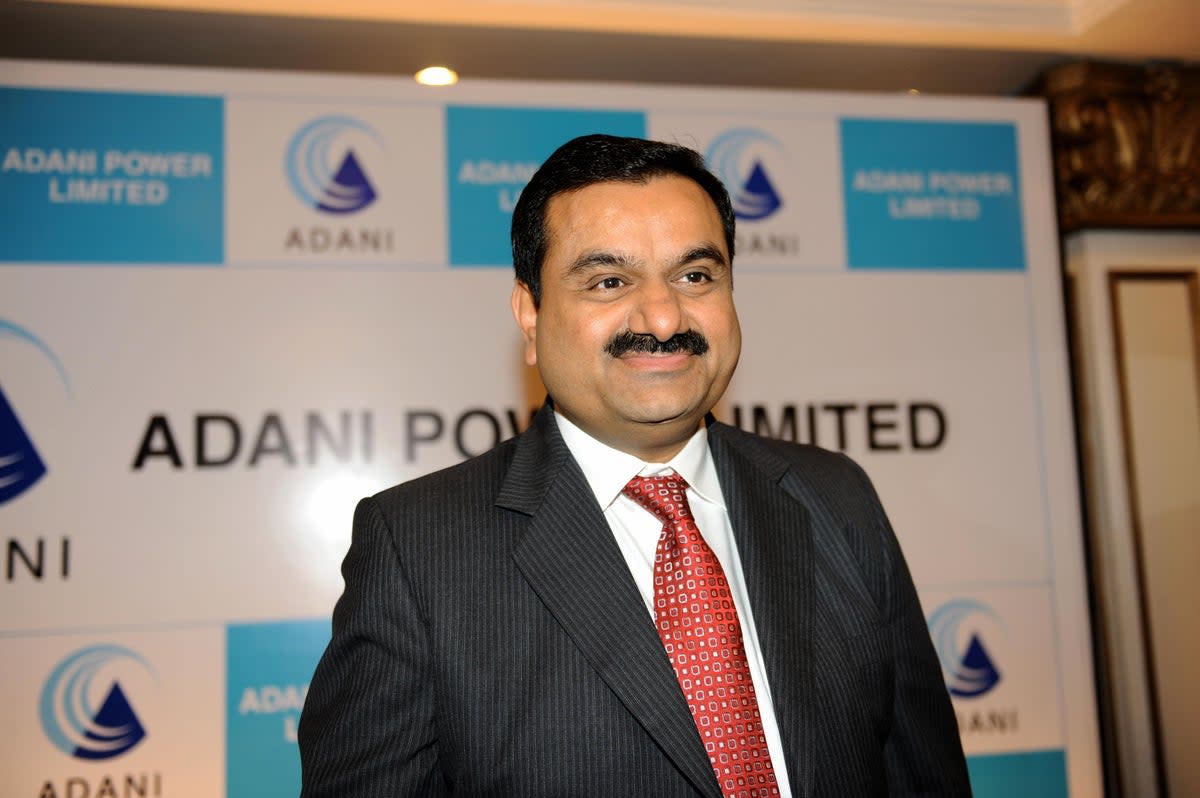Who is Gautam Adani and why does his fortune matter to the Indian taxpayer?

Gautam Adani, once the world’s second-richest man, is facing an unprecedented challenge that has rocked the Indian business world and wiped out billions of dollars from his wealth.
The billionaire’s companies have lost close to $75bn in the span of just one week and he has dropped out of the top 10 list in the Forbes Billionaires Index. In the process, Mr Adani has been overtaken by longtime rival Mukesh Ambani as Asia’s richest man.
The sudden fall in the wealth of Asia’s richest man, known for his meteoric rise and close ties with prime minister Narendra Modi, came after an activist investment firm released a report accusing his company Adani Group of pulling the “largest con in corporate history”.
The report alleges “brazen” stock manipulation and accounting fraud worth $218bn” by the multinational conglomerate, active in resources, logistics and energy, wiping billions from the personal net worth of Mr Adani.
The sharp fall in stocks and allegations are also raising concerns over the vast amount of investments made by Indian public sector companies in Mr Adani’s businesses, amid fears that it could end up affecting the fortunes of millions of Indians.
Here’s a look at who is Gautam Adani, what are the allegations against him and how his fall could impact the wealth of Indian citizens.
Who is Adani
The 60-year-old business tycoon built his empire starting as a humble plastics trader in Gujarat, also the home state of Mr Modi where he was elected as the chief minister three times.
Mr Adani’s fortunes began to take shape soon after India’s liberalisation in 1990s, when he was tasked with developing a deep-water port at Mundra, which now hosts the largest commercial port in the country.
Since then, Adani group has seen a meteoric rise, expanding into infrastructure, logistics and energy, often inviting questions from crticis over his closeness with Mr Modi.
Mr Adani made headlines around the world last year when he briefly surpassed Jeff Bezos as the world’s second-richest man, becoming the face of India’s fast-growing economy, which will overtake China as the world’s most populous country this year.
Over the years, there have been several allegations against Mr Adani, including of cronyism, as his firms have won many Indian energy and infrastructure government contracts.
However, the recent report has been one of the biggest challenges to the multinational conglomerate.
What happened to his group’s stock
Hindenburg Research, an activist investment firm, published a report last week that accused the Adani Group of, among other things, artificially boosting the share prices of its firms over several decades by using a network of overseas shell companies linked to Adani’s family members.
Hindenburg argued that Mr Adani’s companies were collectively overvalued on India’s stock market by more than 80 per cent. The news set the stock market price of his company into a freefall, with many observers, who have long raised questions over the company’s valuations, raising concerns over the public investments made in the Adani group.
On Wednesday, shares of most Adani Group companies continued to extend losses for a fith consecutive trading session despite the company’s attempts torebut allegations levelled by the short seller firm’s report, calling it “malicious”, “baseless” and full of “selective misinformation”.
Mr Adani’s net worth fell by $8.21bn to $84.4bn on Tuesday amid the fallout from the allegations. Since 1 January, he has lost $36.1bn from his net worth.
Why Adani matters to the Indian taxpayer
The sharp fall in stocks of Adani Group has, in turn, raised concerns over the high exposure of the state-owned insurance company, the Life Insurance Corporation (LIC), and India’s largest lender State Bank of India (SBI), to Adani Group companies.
LIC, a company on which a large number of Indian citizens rely for their insurance, has invested heavily in the Adani Group in the last few years. The insurer accounts for over 98 per cent of the entire insurance industry’s investment in the Adani Group, raising fears that the massive losses that the conglomerate is suffering will impact the state-owned company.
Indian banks have an exposure of around Rs 80,000 crore (£7.92bn) to the Adani Group, which is 38 per cent of the group’s total debt. One of the largest lenders, SBI, has defended itself by saying that its exposure to the Adani Group was well below the RBI’s Large Exposure Framework and was secured by cash-generating assets.
However, it did not specify the amount of exposure to the company.
In the last five trading sessions, LIC’s stock has seen an almost 15 per cent drop while SBI has witnessed a 10 per cent decline.


